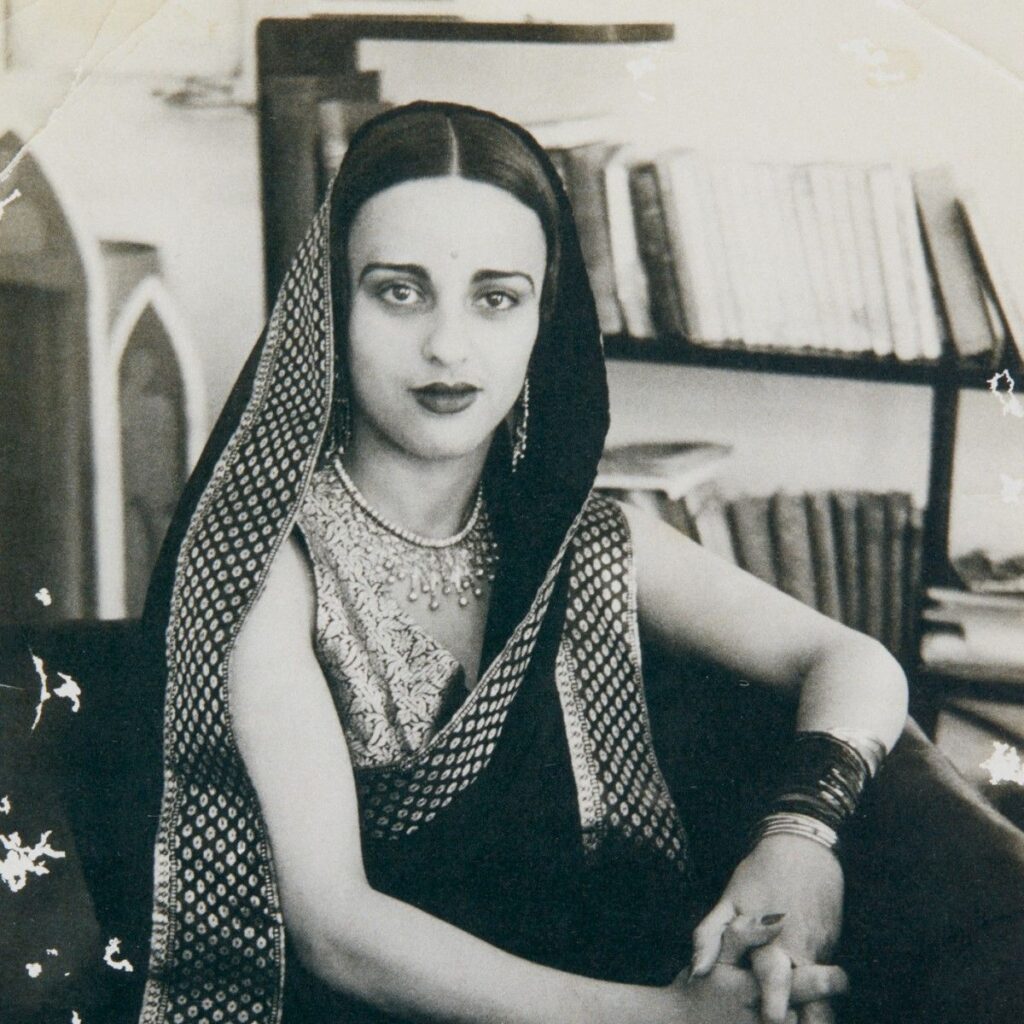
Amrita Sher Gill was born in Budapest, Hungary on 30 January 1913. Her father, Umrao Singh was a Sikh aristocrat, and her mother was a Hungarian opera artist, Marie Antoinette Gottesmann. Amrita, as a young girl, began to make colour-pencil sketch scenes from Hungarian folktales and fairy tales. She returned to Shimla from Hungary in 1921 where she started painting some impressions.
In 1929, Amrita’s parents took her and her sister to Paris for the study of painting and music respectively when she was only 16 years old. There, Lucien Simon admitted Amrita to his studio at the Ecole des Beaux-Arts and that’s when her formal training began. She quickly mastered speaking and writing French and had integrated herself into the social life of Paris. She painted prolifically,producing hundreds of sketches in pencil and charcoal and began to dabble in oil paintings. Her style evolved, which can be summarized as a basic figurative style with a psychological edge, and falls within the School of Paris categories of nudism, portraits, and still lifes. Amrita’s early career consisted of her oils, portraits and models from life in a largely academic style. She worked in Ecole des Beaux-Arts till 1932 and over the four years she won many prizes and was chosen as an associate member of the Grand Salon because of her gold medal for the painting of Young Girls (1932) and became known as a talented figurative painter. Her younger sister modelled for several artworks, with Sleep (1933) standing out as the most sensuous. Amrita had seen Paul Gauguin’s paintings at the Gallery of London a few months before she began painting sleeping figures. She painted Reclining Nude and Professional Model in 1933. In 1933 she left Ecole des Beaux-Arts and set up a studio with her friend Marie-Louise Chassany.
Towards the end of 1933, Sher Gill had an intense longing to return to India thinking that her destiny as a painter lay hidden in India. She returned to India in Amritsar at the end of 1924. At Paris, her professor had told her that her “artistic personality would find its true atmosphere in the colour and light of the East”. Her impression of India was quite different from what she had imagined as voluptuous, colourful, sunny and superficial and conceived through the medium of from what she calls “unutterably mediocre specimen of fifth rate Western art that still abounds in the local exhibition, providing doubtful if not harmful aliment to the artistically under-fed and underdeveloped mind”. She calls those paintings – “tourist paintings” which she doubts as the true interpretation of India. In the same year she painted Self Portrait as Tahitian and certain other paintings that show her interest in Paul Gauguin after her visit to the Gallery of London. Even though they are still mostly academic, they demonstrate a more observable attempt on her behalf to establish post-impressionist ties.

Within two months of Amrita’s arrival in India, she painted Group of Three Girls (1935). This painting clearly shows the new dimension that she started to acquire. Her colours became bolder and lines simpler but surer. This painting won Bombay Art Society’s first prize and Gold medal for the best work in the Society’s exhibition in January 1937. Sher Gill then moved to Shimla where she painted Mother India, Beggar Woman and Portrait of Father. Later, she however, rejected the award of Shimla Fine Arts Society which was amongst one of the best-known art exhibitions held in India. The same year, in 1935, she also painted Hill Women and Hill Men.
Amrita said she wanted to “to interpret the life of Indians, particularly the poor Indians pictorially; to paint those images of infinite submission and patience; to depict their angular brown bodies, strangely beautiful in their ugliness, to reproduce the impression their sad eyes created on me”. She wanted to portray the poverty and Indian poor and had given voice to these in her various articles and letters. This can also be seen from her works in 1935 to 1936. In the next two years, she travelled to Bombay and the south and discovered the historical art of India. She had been exposed to the influence of early Indian Sculpture and discovered frescoes like that of Ajanta and Mattancherry Palace and miniature paintings. She did learn about many Indian schools of painting during her time in Bombay, such as miniature painting, and after seeing the Ajanta frescoes, that experience was another eye-opener for her. She was inspired to create new thoughts and works of art by another aspect of the Indian visual culture. Around this time, Amrita’s art scene had less abstractionism and a strong influence from Pahari miniatures, which were known for their compact and colourful graphic compositions.
In early 1937 she declared herself to be moving towards a work which is more impersonal and dependent on pictorial values. She painted Siesta in the same year in which she tried a multi-perspective composite like a Rajput or Mughal Painting and Bride’s Toilet, Brahmacharis, Village Girl. In early 1938 she painted Hill Scene, Red Clay Elephant, Elephants Bathing in a Green Pool. She marries her cousin Dr. Victor Egan in Budapest and returned to India the next year in 1939. There she painted Hungarian Village Market, The Potato Peeler, Hungarian Peasant etc in Hungary. She painted Haldi Grinder, Woman on Charpai, Resting, some of her famous paintings on her return to India.
She went to Lahore in September 1941 to settle there and painted The Last Unfinished Painting. In December, she died at midnight after a brief illness. Sher-Gill helped pave the path for Indian modernism in art and life that defied boundaries, whenever necessary.
‘Europe belongs to Picasso, Matisse and Braque and many others. India belongs only to me.’ – This declaration by Amrita Shergill in 1938 depicts the bold personality of a pioneering modern Indian woman painter.

